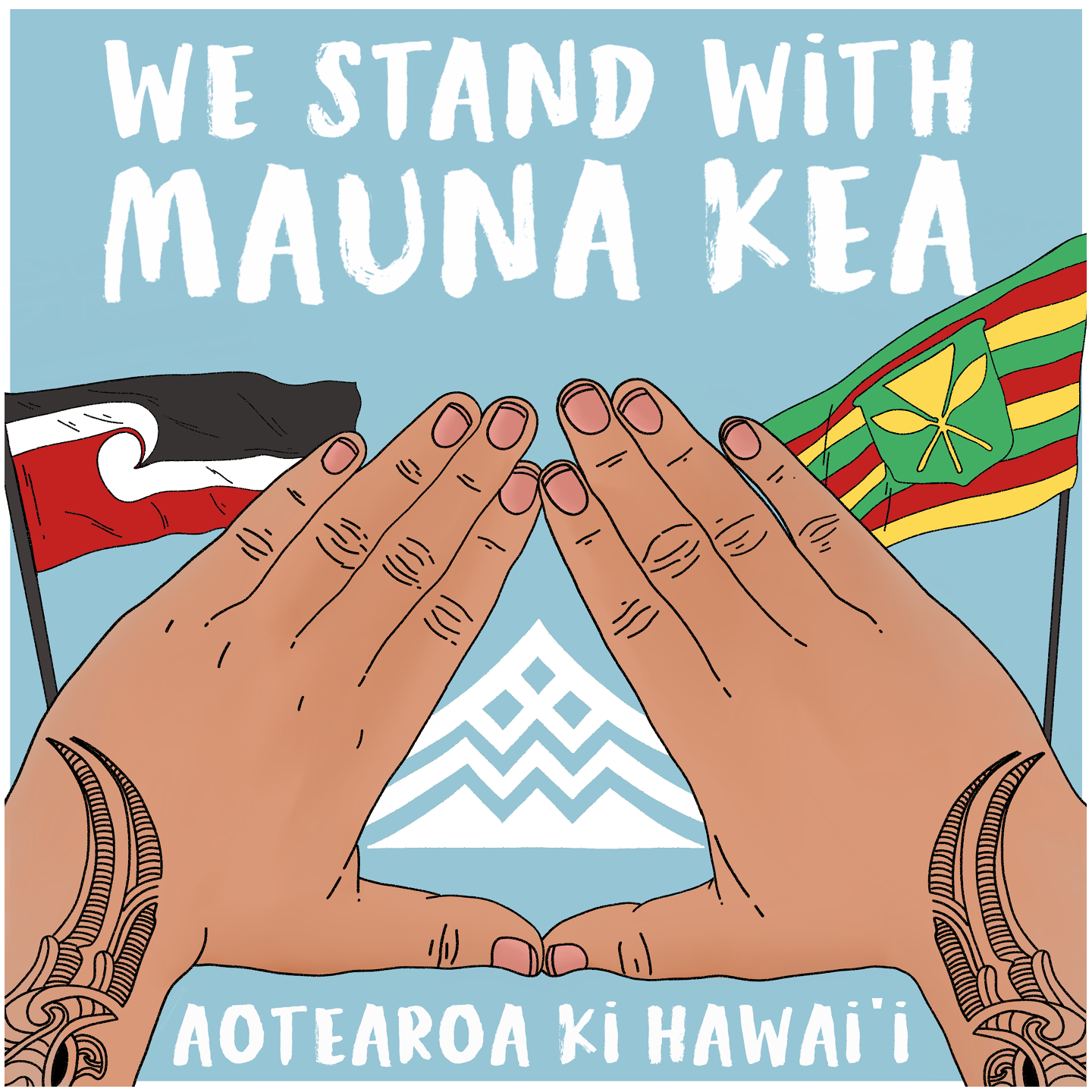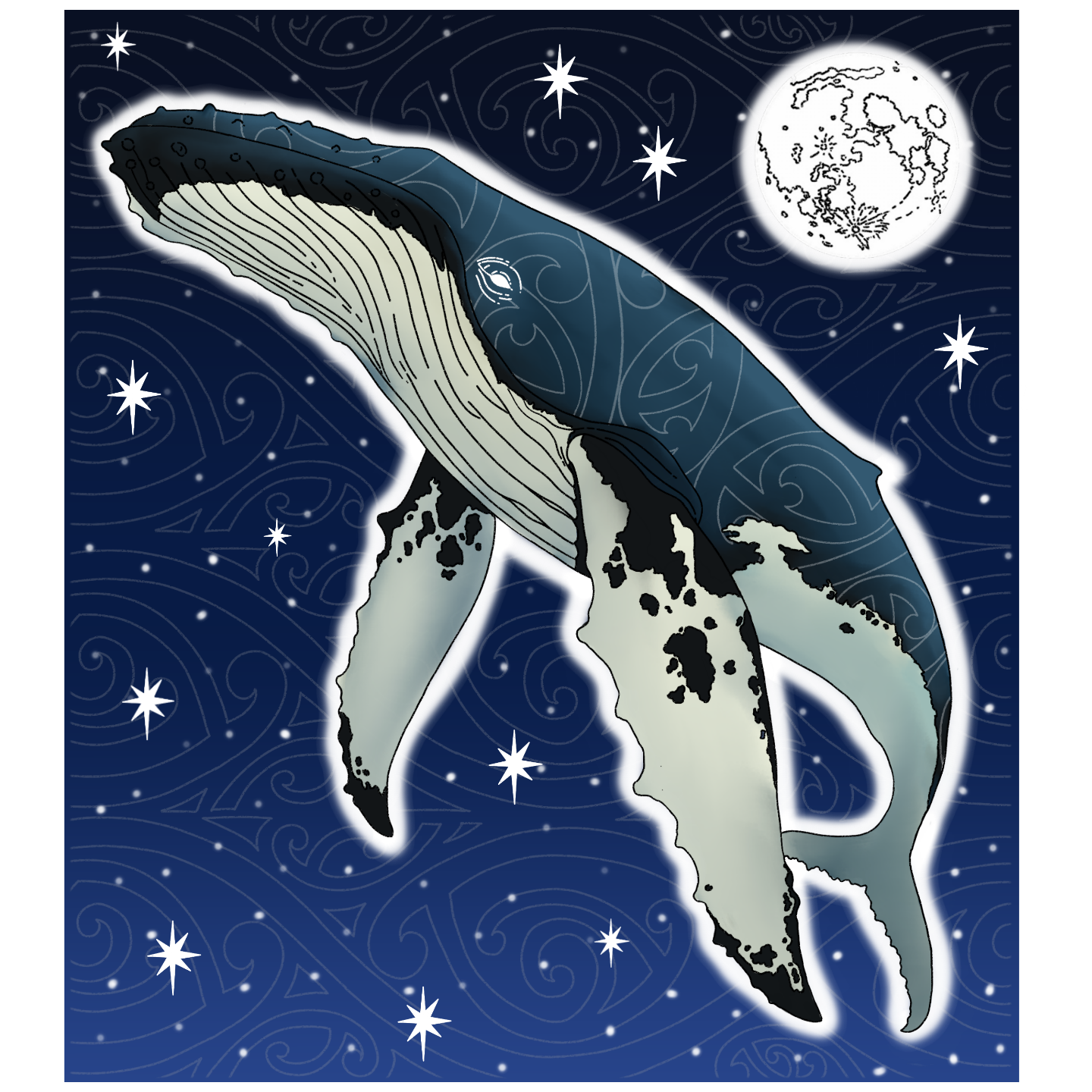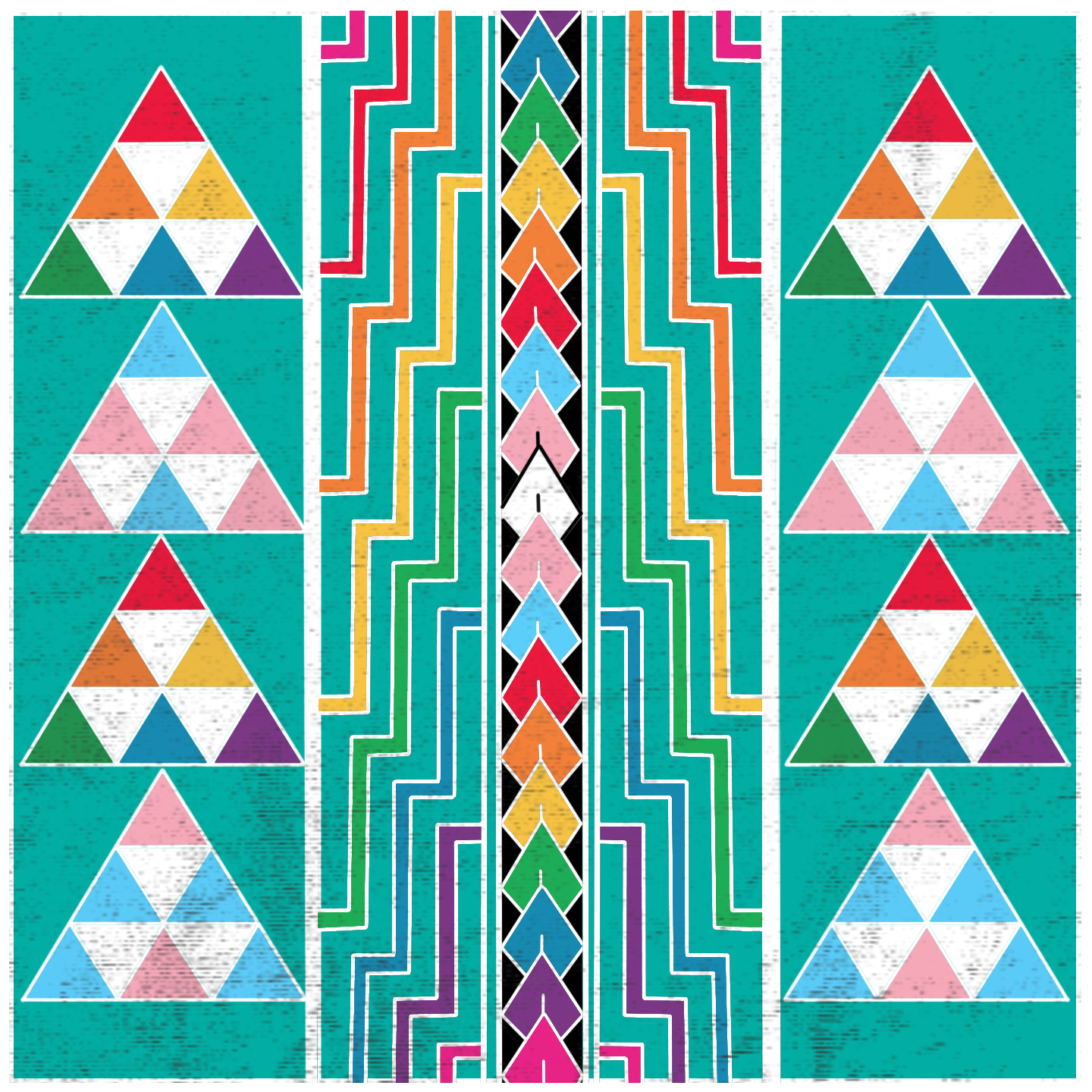Field Art: Huriana Kopeke-Te Aho
In this series, we shine a spotlight on the incredible artists contributing to our 2020 Field Guide.
Today we hear from Huriana Kopeke-Te Aho

How would you describe your illustration/artwork style?
Digital illustrative art, but I also focus heavily on outlining, so illustrative digital line art also fit.
Is illustration your full-time gig or how does it fit around the other mix of work you do?
Āe! I’m currently working full time as an illustrator, which I feel really grateful for. I do want to point out that I wouldn’t have been able to reach this point without the support from more established artists, who pushed for me to have opportunities earlier in my career.

What attracted you to illustration over other creative mediums?
I think illustration as a medium is widely accessible, which is what attracted me to it in the first place. I started out as a political artist and illustration lent itself really well to the various kaupapa I was working in at the beginning of my career. For me, my work needs to be able to not only communicate ideas in a way that is aesthetically pleasing, but also really clear so that everyone can participate and enjoy the work. I also think that there is a long history of illustration being used in various revolutionary movements across the world because of it’s clarity and universality which was really exciting to me.
How do you feel like your practice has evolved since you started out?
At the beginning of my career, I was almost scared to create work that had strong Māori themes or contained strong Māori imagery because I didn’t want to be restricted or pigeonholed because of my identity as a takatāpui person, but now I understand that using my knowledge around whakapapa and Māoritanga has been instrumental in the development of my personal style and my ability to convey complex ideas and that using Māori imagery in my work has only made it better and more relatable to the communities that I come from, and that’s really important to me. I think at the beginning of my career, I also felt a disconnect between my takatāpuitanga and my Māoritanga, so exploring both of those things in unison rather than in opposition has centred me in a way that I’m really grateful for. When I look at my earlier work, I see someone who wasn’t necessarily sure of themselves, but when I look at the work I’m able to create now, I see someone who understands their position in Te Ao Māori in a meaningful way.

What does your dream project or commission look like?
I’d love to be able to create more takatāpui work to be honest, I’ve already worked on several mainstream LGBTQI+ projects, but creating a space for takatāpui specifically, to see ourselves represented, loved, cherished and celebrated sounds like a dream. That being said, I have been lucky that throughout my career I’ve never really had a project that I didn’t enjoy working on.
We are so grateful for the work you are doing on DA’s field guide – Could you give us some behind the scenes into your process for the field guide artwork. What aesthetic or conceptual decisions did you make?
Desna Whaanga-Schollum was the one who suggested the direction of the illustration. We both wanted to highlight the practitioners that she is interviewing, so portraits were something that made total sense to both of us. I’ve done a lot of portraiture so that fit really well with the work I’d already done as well. There’s something really magical about being able to capture the essence of people, so the illustrations are very much focused around capturing and highlighting their mana and the incredible work they’re doing as well.
What project are you most proud of?
I’d probably have to say the work I did for the Protect Ihumātao campaign last year, the illustration work for Counting Ourselves and my pieces for The Future is Death, which was an exhibition that was curated by my friend Leilani Sio in 2018. I’ve had the blessing of being able to do this mahi full time though, so it’s hard to narrow down!

How does your workload compare to before the COVID-19 Lockdown?
I think I’m actually getting more work than I was before, which is really incredible. Because I work from home and my work is mostly designed for online spaces and audiences, I’ve been able to maintain my practice while in rāhui.
Given the Field Guide series is putting a lens on our post COVID practice…What do you hope for the future?
My hope is that there’s more space to support and uplift younger artists. I’ve been really lucky to be able to do this full time but my experience is an anomaly and it shouldn’t be. I’d like to see more equity in funding and investment in and prioritisation of Māori and takatāpui storytelling. There are so many incredible arts practitioners out there who are producing beautiful work with very little resources, and they deserve more. It’s encouraging that there are conversations happening around the importance of the arts in Aotearoa, and I’d like to see those conversations continue.

Finally, where can we see more of your work?
https://www.instagram.com/hurianakt.a/
https://www.facebook.com/hurianakt.a/
Some of my work is also featured in Protest Tautohetohe: Objects of Resistance, Persistance and Defiance and He Paki Taonga i a Māui, publish through Te Papa Press.




